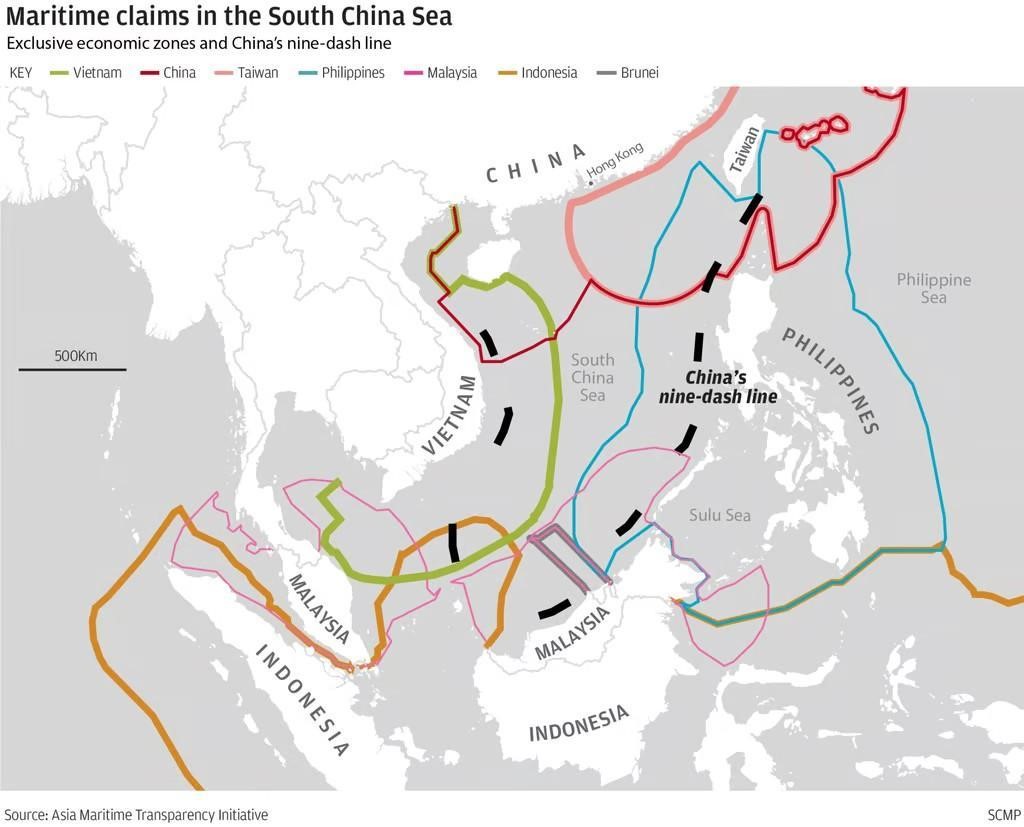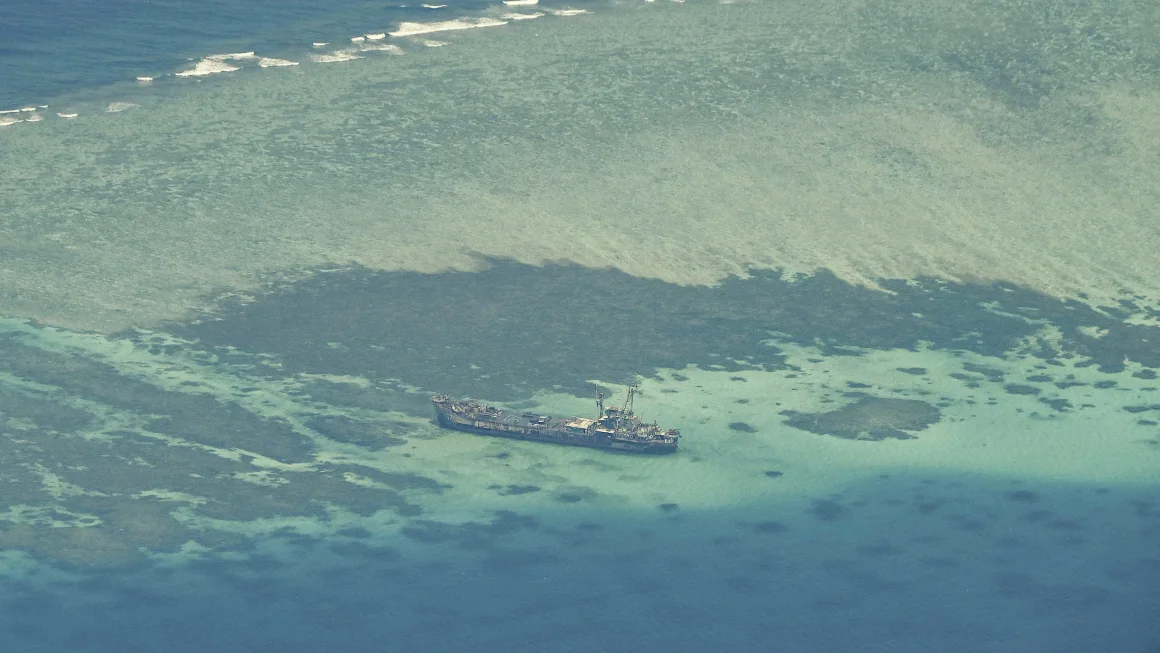The Philippines is poised to become the epicenter of global geopolitics this decade. This 7,000 islands archipelago is fast becoming the key cornerstone in global power dynamics. While attention fixates on Ukraine, Africa or the Middle East, a more intricate and strategic geopolitical game is unfolding in Southeast Asian locations, driven largely by China’s assertive policies.
The United States, India, Japan, Germany, France, Italy, the U.K., Australia, Canada, Vietnam, New Zealand, Singapore, and Brunei. In recent months, all have engaged with Manila on security matters. From signing agreements to conducting joint drills, this expanding defense network underscores the country’s rising prominence.
President Marcos, a Diplomatic Strategist
Washington’s influence over Manila, often seen as dominant due to historical ties—an impression paradoxically reinforced by Beijing’s narrative—is more nuanced. The 1951 Mutual Defense Treaty forms the backbone of this alliance. The 2014 Enhanced Defense Cooperation Agreement further expanded U.S. access to Philippine bases, aimed at countering Beijing’s moves in the South China Sea (SCS; known as the “West Philippine Sea” in Manila). The 2023 U.S.-Philippines Bilateral Defense Guidelines added that an “an armed attack in the Pacific […] would invoke mutual defense commitments.”
However, it is President Ferdinand Marcos Jr.’s diplomatic acumen, shaped by both personal and political experiences, that steers the Philippines’ strategy. His early exposure to diplomacy, accompanying relatives on state visits, combined with his ability to cultivate relationships with global leaders, has shaped his distinctive approach to managing international relations, positioning the country as the new crucial swing state.
The Philippines has refined “bamboo diplomacy”—balancing flexibility and resilience amid U.S.-China rivalry—by integrating a robust security component. After taking office in 2022, Marcos has employed ‘bamboo military diplomacy’ to counter China’s assertiveness in the SCS. This strategy goes beyond the “transparency initiative,” which merely highlights Chinese activities in the area, by seeking to strengthen Manila’s negotiating leverage with Beijing.
President Marcos has fortified the military alliance with Washington through frequent bilateral high-level visits, while safeguarding Philippine sovereignty by denying American access to northern facilities closest to Taiwan (Batanes Islands). This dual approach balances cooperation and restraint, defining the limits of U.S.’ involvement. By rejecting immediate support for resupply missions yet leaving the door open for future assistance if tensions escalate, Marcos maintains calculated ambiguity with China, signaling that Manila is not merely a Washington proxy and avoiding unwarranted provocation. Overall, Marcos refuses “to play by the rules that force choosing sides in great power competition.”
Nonetheless, the long-term viability of this security-diplomatic strategy remains uncertain. While it enhances the Philippines’ deterrence, the balance is precariously thin. Despite its efforts, the Philippines still struggles in securing its defense, as the reliability of most Western allies for conflict intervention remains unclear. Without formal commitments, Manila should bolster its self-defense capabilities beyond gestures.
Conversely, the Taiwan situation highlights the risks of full alignment with U.S. policies, which could unnecessarily provoke China. Additionally, the unpredictability of U.S. intervention in a global conflict with China over reefs and rocks in the SCS is evident from the 2012 Scarborough Shoal standoff, where China today asserts “indisputable sovereignty”.
China’s Asia-Pacific Strategy: A Decade in the Making
Beijing has grown overconfident following the success of its Maritime Silk Road and subsequent “String of Pearls” strategy, with a network of tactical ports and military outposts across the Indian Ocean. Investments in Sri Lanka’s Hambantota, Pakistan’s Gwadar-CPEC, and Djibouti reinforce China’s hold over maritime chokepoints, safeguarding its trade, energy and security. Harbors have been constructed across Africa, South Asia and several ASEAN nations, including Myanmar’s Kyaukpyu, Cambodia’s Sihanoukville, and Vietnam, expanding its strategic foothold with the tacit acceptance of the U.S., India, Japan, or Australia, who have largely remained passive.
However, without dominion of the SCS—the first and last stop for China’s shipping fleets—those efforts would be in vain. The Philippines topography is pivotal there, with its proximity to Taiwan—just 190 kilometers away—intensifying security concerns; it could also become a strategic hub for U.S. forces in a Taiwan conflict. As U.S. military bases in the Philippines remain vital for American power projection, China feels compelled to counterbalance this presence.
Indeed, Beijing acts as though control of the SCS is the essential buffer zone to the nation’s very survival, or at least to the persistence of its leadership. For now, the narrative suggests they aim to avoid being choked off from free navigation, anticipating future conflicts and unpredictable shifts in regional governance.
Additionally, the SCS disputes involve overlapping claims from Malaysia, who has likewise previously resisted Beijing’s advances. Vietnam, seen as friendlier with China, has not faced the same level of pressure. Taiwan and Brunei also assert territorial claims, complicating the situation further. Indonesia is not immune either, with its own tension with China over the Natuna Islands.
China alleges historical rights over nearly the entire SCS, based on its own interpretation of maps like the “Nine-Dash Line” (released in 1947) and the expanded 2023 “Ten-Dash” for including Taiwan. This justification underpins China’s construction of militarized artificial islands on reefs, with facilities such as airfields and harbors, particularly in the Paracel and Spratly Islands (known as Xisha and Nansha Islands in China). These territories are vital for their strategic location, national security, economic activities like fishing and hydrocarbons, key maritime routes and even power projection.

Graphic: South China Morning Post (Alyssa Chen)
In 2016, the Permanent Court of Arbitration ruled unanimously that China’s claims in the SCS conflicted with the exclusive economic zones of other coastal states under the UN Convention on the Law of the Sea (UNCLOS). Beijing deemed the ruling “null and void” and continued its expansionist policy, a stance incongruous with the same legal framework that facilitated its global rise and secured its influential status as a permanent UN Security Council member with veto power. The U.S. did not even ratify UNCLOS. For smaller nations, the current realpolitik approach of major powers poses a crucial question: to what extent can they rely on international law when facing superpowers that overlook it?
Recent Clashes
A fresh illustration of this geopolitical tug-of-war is the China-Philippines agreement to resupply a small contingent on the BRP Sierra Madre—an aging Filipino warship deliberately grounded in 1999 at the Second Thomas Shoal.
Following incidents in the area, China and the Philippines announced a “provisional arrangement” right before Marcos’ 2024 State of the Nation Address in July, while keeping the details concealed. The deal seemingly conceded to Chinese demands for advance notification, inspection, and restrictions on supplies to humanitarian aid. Despite Marcos’ denial, this secrecy echoed Duterte’s presidency (2016-2022)—which faced strong criticism for being too lenient on China— including another secret “gentleman’s agreement” that limited Manila’s freedom of navigation and resupply to the Sierra Madre.
This vessel serves as a makeshift military base yet is deteriorating. Beijing has accused Manila of using reinforcing materials to establish a permanent presence at the Shoal, located 200 kilometers from Palawan and over 1,000 kilometers from China’s closest territory, Hainan. A state’s exclusive economic zone (EEZ) extends 370 kilometers seaward.

Philippine vessel BRP Sierra Madre grounded on Second Thomas Shoal, SCS. Aerial view, March 9, 2023. Jam Sta Rosa/AFP/Getty Images
Everything Everywhere All at Once
Can China handle everything, everywhere, all at once? This inquiry delves into Beijing’s strategic mindset and its ability to simultaneously confront multiple geopolitical fronts in Asia-Pacific without risking failure: pushing for Taiwan’s “reunification,” asserting maritime claims affecting Malaysia, Vietnam and the Philippines, and clashing with India along the Line of Actual Control.
The Philippines’ central role in the Indo-Pacific adds complexity to regional geopolitics. First, enhanced military cooperation with the U.S. allows Washington to position as a crucial counterbalance to Beijing in the region. Second, Manila’s new policy towards China could inspire other ASEAN nations to follow suit individually, particularly since the organization remains uninvolved in the tension and signed in 1992 with China the Declaration on the Conduct of Parties in the SCS for the peaceful settlement of disputes. Furthermore, protecting territorial claims, trade routes, and energy reserves may come at the cost of strengthening security alliances among other regional actors, risking unintended consequences.
Nevertheless, evolving concerns about U.S. security commitments offer China an opportunity. With the uncertainty surrounding U.S. guarantees post-November presidential election, especially if Trump wins, Indo-Pacific nations might face shifts in traditional alliances. This could disrupt strategic partnerships and compel allies to reassess their positions, especially after the U.S. undermined its own influence by withdrawing from the Trans-Pacific Partnership in 2017, and with the 2022 Indo-Pacific Economic Framework for Prosperity (IPEF) struggling to gain momentum.
Given these dynamics, China could achieve greater success through soft power, where persuasion outshines provocation. As U.S.-China tensions escalate, leveraging diplomatic and economic engagement could enhance Beijing’s influence in Southeast Asia, offering a non-confrontational path that mitigates the risk of pushing nations closer to Washington.